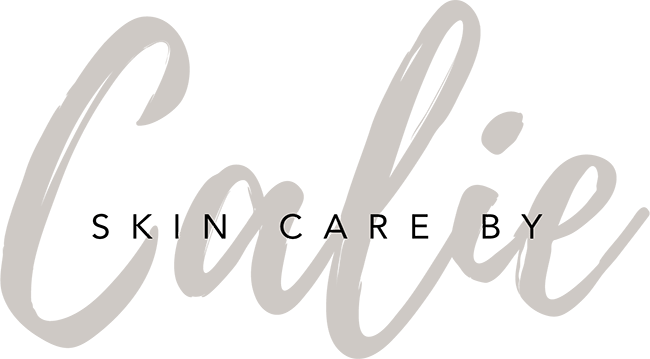Chemical peels. The name itself brings up inaccurate ideas and images of what it’s like to have this treatment done. The new formulas used today are both safe and healthy, providing one of the best solutions to achieve the healthy skin you’re looking for. Here at Skin Care By Calie, I perform professional chemical peels by the medical grade line of Skin Ceuticals.
What is a chemical peel?
A chemical peel is a technique used to improve the appearance of the skin on the face, neck or body. A chemical solution is applied to the skin that causes it to exfoliate. It is a therapy to reduce or improve wrinkles, blemishes, pigment spots, and sun-damaged areas of the skin. Peels exfoliate the outer layers of dead skin, revealing a new skin layer with improved tone, texture, and color. It is one of the oldest cosmetic procedures in the world, and was performed in ancient Egypt, Greece, and Rome to help people achieve smoother, more beautiful skin. Today, chemical peels are popular because they offer nearly immediate results.
Your skin will be left feeling tighter and thicker once you are all healed. This is due to the increased collagen production. Upon healing the skin may appear smoother with smaller pores. Some stronger peels will help with less fine lines and wrinkles as well. Basically, your skin will look more youthful and rejuvenated following a chemical peel.
Are you a good candidate for a chemical peel? These are some common reasons why you may want to consider a chemical peel:
- You have sun-damaged skin
- You have significant facial wrinkling
- Your skin color is uneven with blotchiness, sunspots or brown spots
- You have acne scarring and or active acne
- You have certain precancerous skin growths
How is a chemical peel procedure preformed?
First your appointment will start off with your initial consultation. You will have the opportunity to discuss your concerns and goals. I will then evaluate you as a candidate for a chemical peel and clarify what I can do for you. It is important to understand all of your medical conditions and goals to decide on the best treatment plan for you. Such information will include, allergies and current medications, previous surgeries, Fitzpatrick scale (skin type), past and present medical conditions.
What are the depths of the different types of chemical peels?
Chemical peels are grouped and defined by their strength and depth. There are many different types and varieties. Groups of peels include, the light peels (AHA) and light oiled based peels (BHA), medium peels (TCA), and deep peels (Phenol).
Light peels: A light chemical peel is a non-invasive treatment which removes the upper layers of dead and damaged skin while encouraging skin cell regeneration. This is a very gentle treatment created for those looking to improve fine lines, acne, chronic dry skin, and uneven pigmentation. Light peels are also known as AHAs and or/ BHAs which stands for alpha and beta hydroxy acids. These levels of peels contain very common chemicals such as glycolic acid and salicylic acid.
Alpha hydroxy acids are derived from fruit, sugar, milk and other natural sources. AHAs aside from Glycolic Acid (extracted from sugar cane) include Lactic Acid (extracted from milk), Malic Acid (extracted from pears and apples), Citric Acid (extracted from oranges and lemons) and Tartaric Acid (extracted from grapes).
Beta hydroxy acids are a simple organic derived from fruit. Though closely related to alpha hydroxy acids, beta hydroxy acids differ in their molecular structure and rejuvenate your skin in a slightly different way. Salicylic acid is the most common beta hydroxy acid and is a chemical peel especially effective in eliminating acne. This type of peel can help in the aid of exfoliating oily skin without being too irritating.
If you are someone looking for a light chemical peel, alpha hydroxy and beta hydroxy acids will encourage your skins cell regeneration with little to no discomfort.
Medium peels: A medium peel will help correct acne scars, uneven pigmentation, improve the texture and tone of the skin, and smooth out fine lines. A medium chemical peel is also known as a TCA chemical peel which stands for trichloroacetic acid. Medium (TCA) chemical peels penetrate the skin more deeply than light chemical peels and are known for delivering long-lasting results after a brief healing process. This is an excellent “middle of the road” approach for those who don’t have long enough healing time for a deep peel but want to achieve results beyond a light one. Trichloroacetic acid (TCA) are potent medical-grade treatments that effectively improve skin texture, uneven color, pigmentation from acne, large pores and melasma. It is common agent used for chemical peeling and facial resurfacing.
Deep peels: A deep peel also known a phenol peel is the most aggressive type of skin peel. This peel is a remedy for severe sun damaged skin, coarse wrinkles, scars and pre-cancerous growths. Deep peels are made to address more serious problems. It uses carbolic acid which is an aromatic organic compound to treat the skin. This is a very powerful treatment and is one you need to plan for recovery. Patients with dark skin, freckles and certain heart conditions are not ideal candidates for this stage peel. However, you will have more dramatic results and less treatments are needed.
What is the recovery process?
The recovery process time varies and differs from each patient. It depends on the type of peel administered and the degree of the peel. At your initial consultation I will go over each peel and the corresponding recovery time. Some peels require virtually no recovery time while others could require 7-10 days to fully heal.
Call and set up your consultation today!





